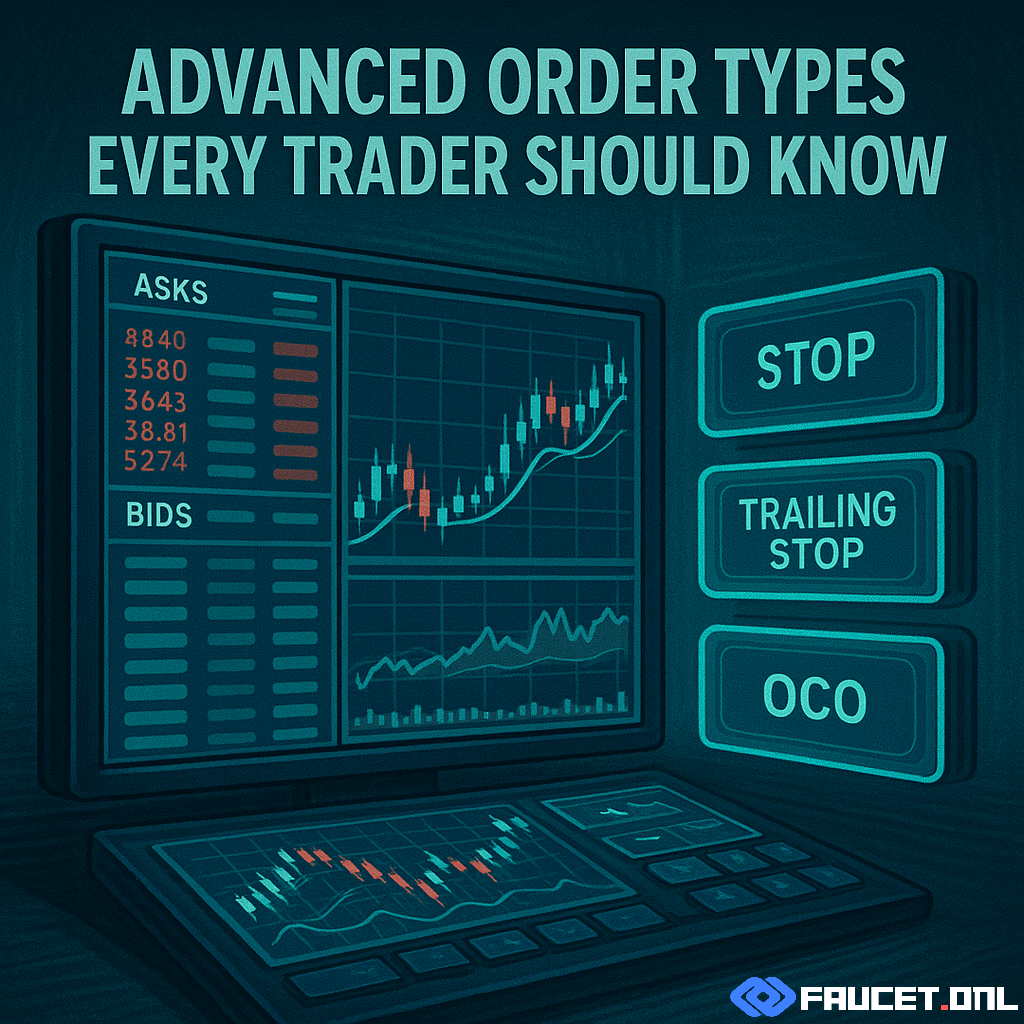What’s an Order Type?
Every trade in crypto markets begins with an order—a set of instructions telling the exchange when and how to buy or sell an asset. The simplest order types, like market and limit orders, are familiar to all traders. But as you progress, understanding advanced order types becomes crucial for capitalizing on opportunities and protecting your portfolio from rapid price swings. These order types go beyond the basics, offering greater precision and automation for both entry and exit strategies.
Top Advanced Order Types in Crypto Trading
Let’s break down the essential advanced order types you’ll encounter on major crypto exchanges:
Stop Order
A stop order—often called a stop-loss or stop-market order—automatically triggers a market order when the price hits a specific threshold. Traders use stop orders to limit losses or lock in profits without monitoring the market 24/7. For example, if you own BTC at $60,000 and want to limit potential losses, you could set a stop order at $58,000. If the price drops to $58,000, your order becomes a market sell, exiting your position before deeper losses.
Trailing Stop Order
A trailing stop order is a dynamic version of the stop order. Instead of a fixed trigger price, the stop price "trails" the market by a set percentage or dollar amount. If BTC rises from $60,000 to $62,000, your trailing stop also moves up. If the price reverses by your chosen trailing distance, the order triggers. This order type is powerful for letting profits run while protecting against sharp reversals—a favorite among momentum traders.
OCO (One Cancels the Other) Order
An OCO order allows you to place two linked orders—usually a take-profit and a stop-loss—so that if one executes, the other is automatically canceled. For instance, you could set a limit sell order at $65,000 and a stop sell at $58,000 for BTC. If the price hits either level, you lock in profit or minimize loss without manually canceling the other order.
Iceberg Order
Iceberg orders split a large order into smaller chunks to avoid signaling your intentions to the market. Only a portion of the order is visible in the order book at any time, with the rest hidden ("under the iceberg"). This helps prevent price slippage and minimizes the impact of large trades, making it ideal for institutional or high-volume traders.
Fill or Kill (FOK), Immediate or Cancel (IOC), and Good ‘Til Canceled (GTC)
- FOK: The order must be filled in its entirety immediately or it is canceled.
- IOC: Any part of the order not immediately filled is canceled.
- GTC: The order remains active until it is filled or manually canceled.
While these are not always “advanced,” their tactical use in high-volatility markets is crucial for experienced traders.
How to Use Advanced Order Types Effectively
Deploying these order types requires both technical know-how and a deep understanding of market behavior:
- Automate Exits and Entries: Set stop and trailing stop orders to protect positions or ride trends without emotion.
- Stealth Trading: Use iceberg orders to enter or exit large positions without alerting other traders.
- Risk Management: Combine OCO orders for simultaneous profit-taking and loss limitation.
- Adapt to Volatility: Choose IOC or FOK when speed is critical, such as during major news events or thin liquidity.
Common Pitfalls with Advanced Order Types
While advanced order types offer more control, they can also introduce new risks:
- Slippage: Stop and trailing stop orders can execute at worse prices during fast markets due to liquidity gaps.
- Order Misconfiguration: Incorrect settings (e.g., wrong trailing distance or stop trigger) may cause premature execution or missed trades.
- Partial Fills: IOC or iceberg orders may not be fully executed, especially in illiquid markets.
- Hidden Costs: Some exchanges charge higher fees for certain advanced orders. Always check the fee schedule before deploying.
- Technology Risk: Automated orders rely on exchange uptime—outages or API errors can disrupt execution.
Pro Tips for Mastering Advanced Order Types
- Backtest strategies using demo accounts to see how different order types behave in real market conditions.
- Double-check all parameters—especially trigger prices and amounts—before submitting.
- Start with small position sizes to build confidence in your execution and avoid costly mistakes.
- Stay updated with your exchange’s specific order type implementation, as details may vary across platforms.
- Combine order types for layered protection: e.g., a trailing stop plus an OCO for automated exit and risk control.
Conclusion
Advanced order types are a powerful toolkit for serious crypto traders, enabling precise, emotion-free execution and enhanced risk management. By mastering stop, trailing stop, OCO, iceberg, and tactical limit orders, you can gain an edge in today’s fast-moving markets. However, always test thoroughly, stay vigilant for pitfalls, and remember that no order type guarantees profit—only smarter, more strategic trading.
Further Reading and Resources
- Binance Academy: Crypto Order Types Explained
- Investopedia: OCO Order
- Kraken Learn: Crypto Trading Order Types



